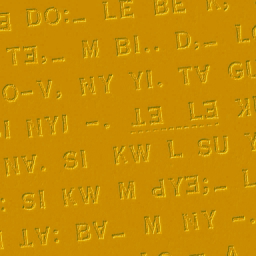| Fraser | |
|---|---|
 | |
| Script type | |
| Creator | James O. Fraser |
Time period | c. 1915–present |
| Direction | Left-to-right |
| Languages | Lisu |
| Related scripts | |
Parent systems | |
| ISO 15924 | |
| ISO 15924 | Lisu (399), Lisu (Fraser) |
| Unicode | |
Unicode alias | Lisu |
| U+A4D0–U+A4FF, U+11FB0–U+11FBF | |
The Fraser or Old Lisu script is an artificial abugida for the Lisu language invented around 1915 by Sara Ba Thaw, a Karen preacher from Myanmar, and improved by the missionary James O. Fraser. It is a single-case (unicameral) alphabet. It was also used for the Naxi language, e.g. in the 1932 Naxi Gospel of Mark,[1] and used in the Zaiwa or Atsi language, e.g. in the 1938 Atsi Gospel of Mark.
The script uses uppercase letters from the Latin script (except for the letter Q) and rotated versions thereof (except for the letters M, Q and W) to write consonants and vowels. Tones and nasalization are written with Roman punctuation marks, identical to those found on a typewriter. Like the Indic abugidas, the vowel [a] is not written. However, unlike those scripts, the other vowels are written with full letters.
The local Chinese government in Nujiang de facto recognized the script in 1992 as the official script for writing in Lisu, although other Lisu autonomous territories continue to use the New Lisu.[citation needed]
- ^ "Naxi Gospel of Mark 1932". Archived from the original on 2017-12-01. Retrieved 2017-12-01.